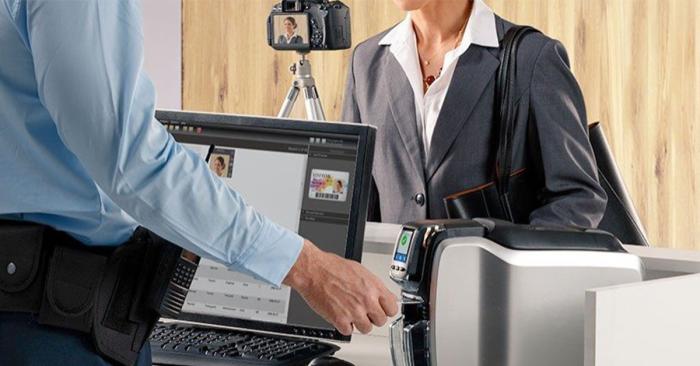What's Most Important in an ID Card Printer?
March 05 2020

ID cards and badges are important for a variety of reasons. You may need visual identification for security personnel to know who belongs in your facility and who doesn't. Some companies need more functionality from their cards like access control and payment ability. These are just a small peek at what an ID card can do. More options make it hard to determine what's most important to consider when picking out an ID card printer.
Before you decide the cost of an ID card solution is first on your list, you may find the following to be even more important.
Volume
One of the most important considerations, the volume of ID cards you expect to print each year is crucial when picking out the best ID card printer for your needs. Why? Because manufacturers design their ID card printers to handle a specific volume of cards. One of the worst decisions you can make is trying to make an entry-level ID card printer print a high volume of cards hoping to save money. Expect significant issues with your printer if you try to print more cards than its recommended printing capacity.
Technology
Printing on a plain PVC card is a lot different from encoding or even printing on a technology card like a proximity or smart card. Not all printers handle technology cards, so if you need an ID card that provides more than visual identification, you need a specific printer. You can upgrade many printers with specific encoding modules to create ID cards encoded with data, but that's not the only consideration.
Some technology cards have uneven surfaces thanks to embedded chips and antennae. Uneven surfaces not only affect your ID cards' print quality but can damage your card printer's printhead, a costly repair. Depending on your company's technology needs, you may need a retransfer ID card printer.
Sides
If you plan on printing on both sides of your ID cards, you need a dual-sided ID card printer. Don't think you can buy a single-sided printer and just flip your cards over, unless of course you want to reduce your printer's lifespan. A nice option with some ID card printer models is a field-upgradable unit. If you think you might need both sides in the future but not immediately, you can upgrade it in the field with a dual-sided print module. They're easy to install and turn your single-sided printer into a dual-sided option so you can take advantage of the real estate on both sides.
Security
If you need fraud-proof security measures like holographic images, micro text, and more, you'll need a specific printer to handle them. The good news is all printers can handle standard security measures like employee pictures, signatures, and company logo.
Some environments like government entities or corporations with proprietary assets may need even higher, tamper-proof security like biometrics or lamination with holographic images.
Durability
Plants, manufacturing facilities, and construction sites are often hard on ID cards. Between excess heat, cold, and extreme weather, the environment subjects your employees' ID cards to serious wear and tear. If you don't want to constantly reissue cards and badges as they wear out, consider a laminating ID card printer.
Lamination provides a protective layer that can extend the life of your ID cards by years. It also keeps graphics and images from fading in the sun and makes cards sturdier and less susceptible to cracks or bending.
Not all ID card printers laminate, so if the environment is a factor when using your ID cards, you'll need a specific printer.
Image
Most ID card printers offer great image quality; this consideration is more about your company's professional image. Will your ID cards be part of your company's branding efforts? For example, your employees may visit clients' offices where their ID cards provide visual proof of their identity. Consider a high-end printer if it's important your employee’s ID cards present a stunning first image.
Direct-to-card printers print up to the edge of an ID card, leaving a small white border around the edges. A retransfer printer, on the other hand, prints over the edge, giving your cards full coverage from edge to edge. Another great advantage of a retransfer printer is it offers higher durability and tamper-resistant cards.
Final thoughts
Not all ID card printers function equally. Don't let this make choosing the right printer for your business seem overwhelming. While there are a lot of amazing ID card printers on the market, the above will help you narrow down your focus to what's most important.
When you have determined what you need your ID card printer to do, contact your Idesco ID Expert at 212-889-2530. Our experts have extensive experience with every printer make and model but have no ties to any manufacturer. Our sole purpose is to help you find the perfect ID card printer that meets or exceeds your business and security needs and fits nicely into your budget.
Add New
Comments
no comments found